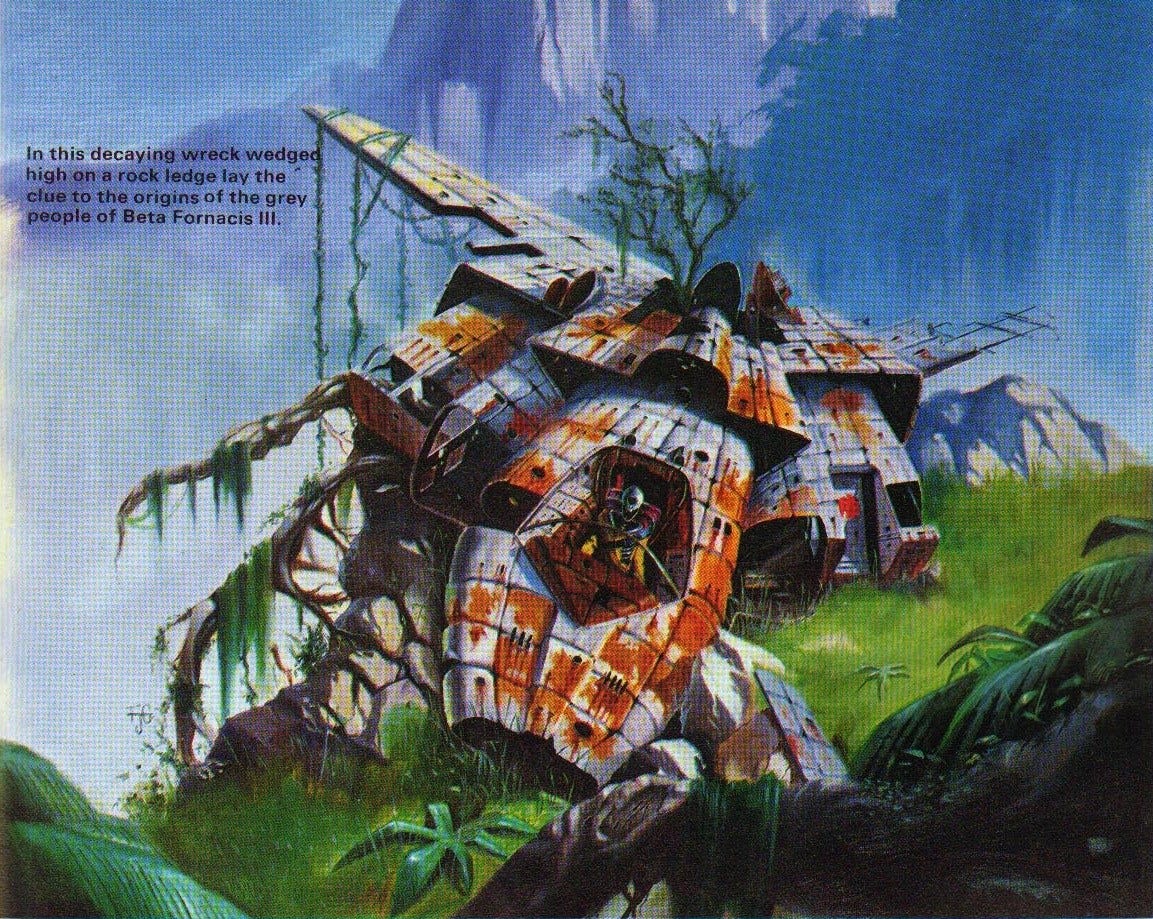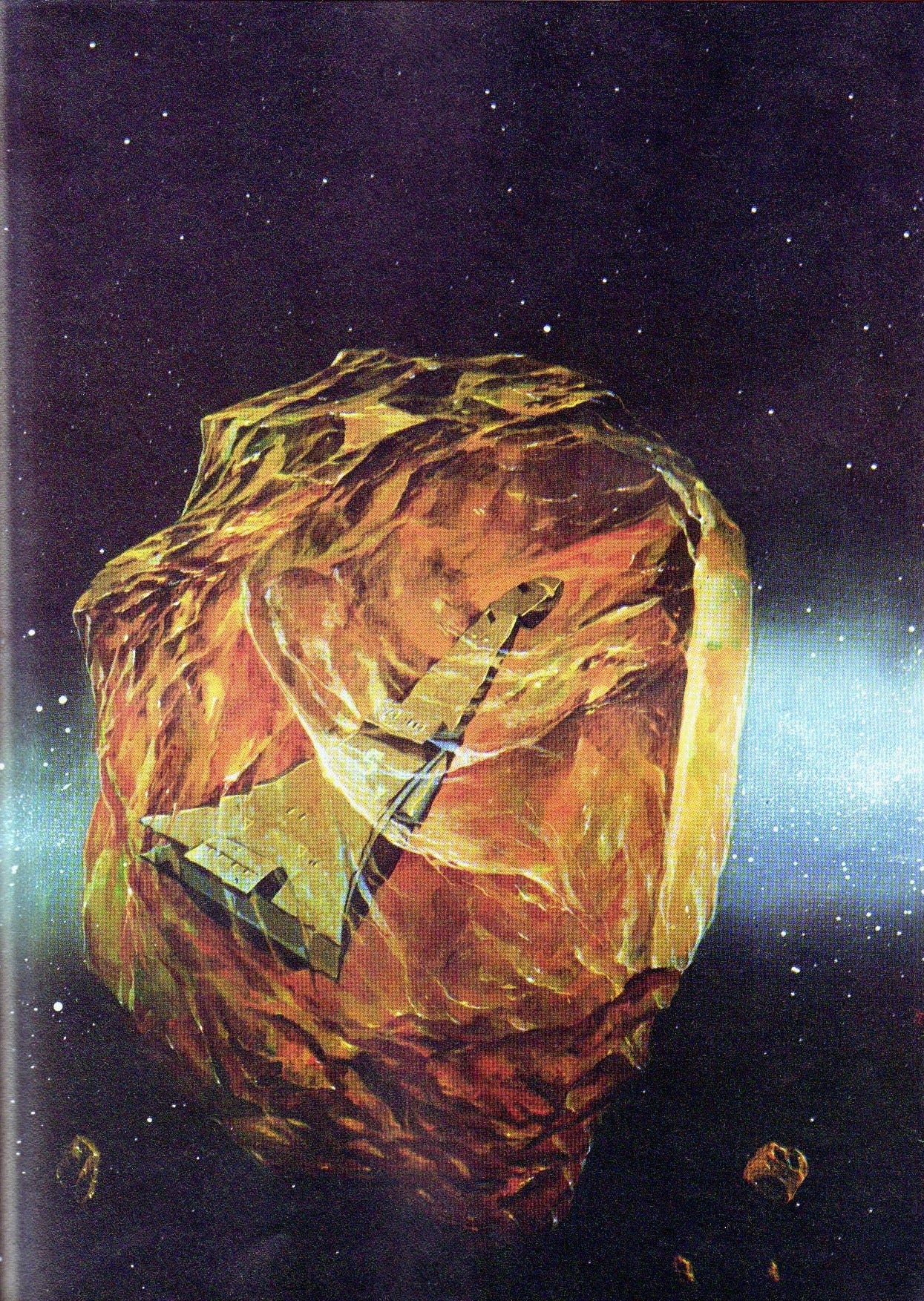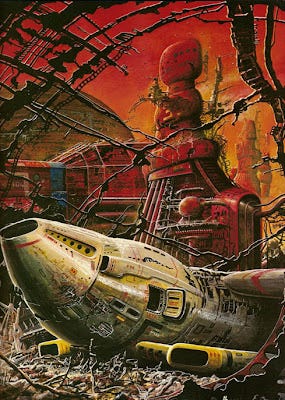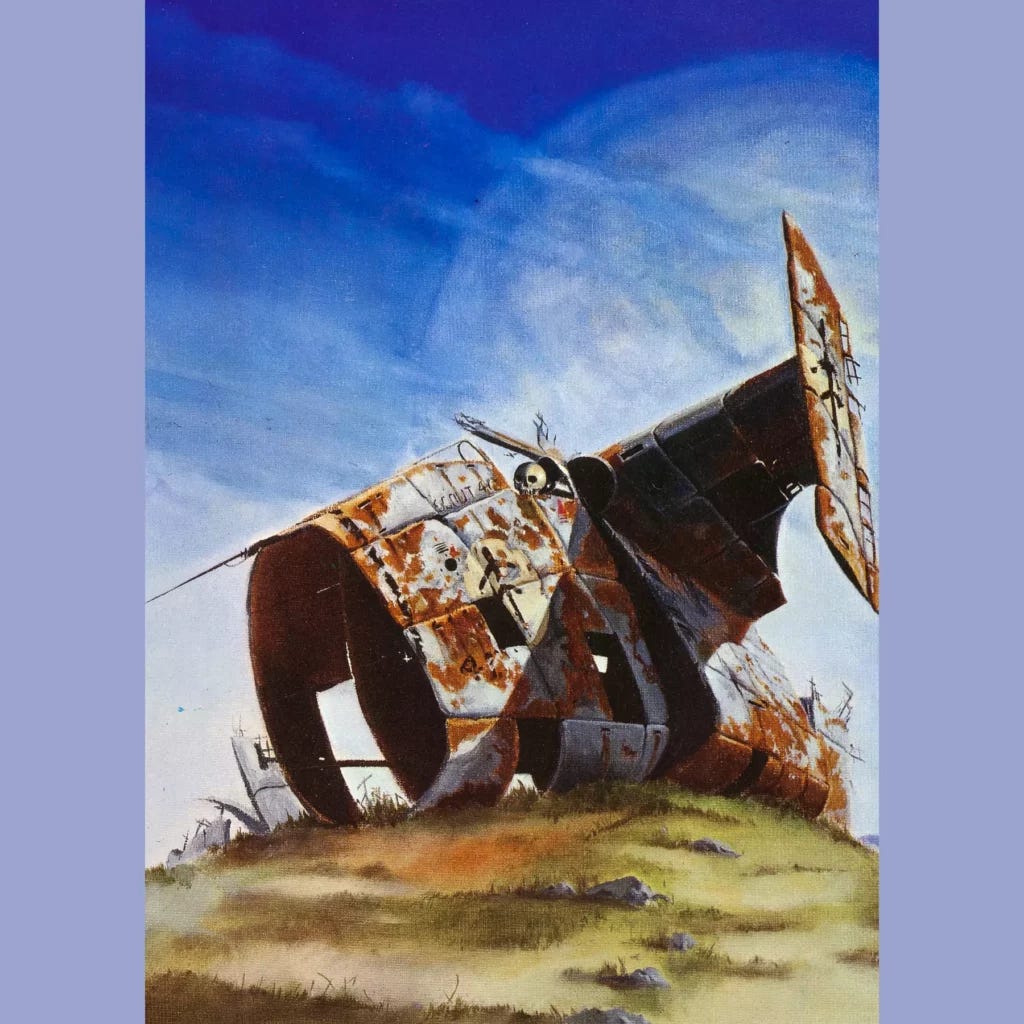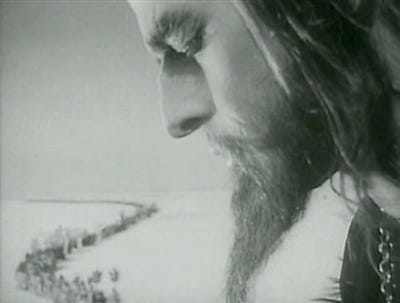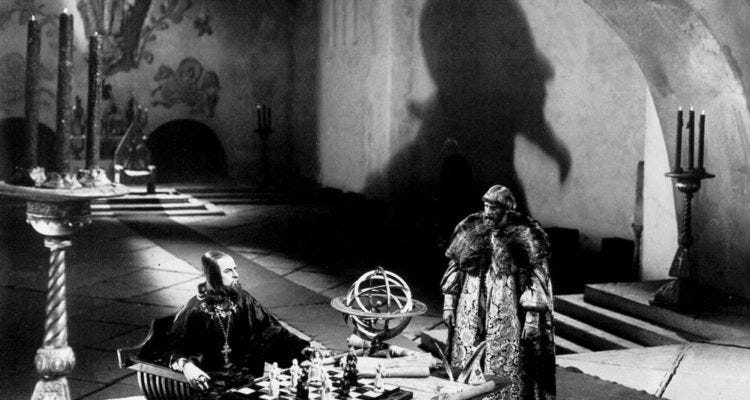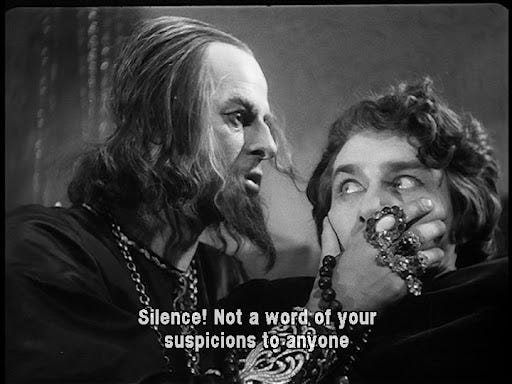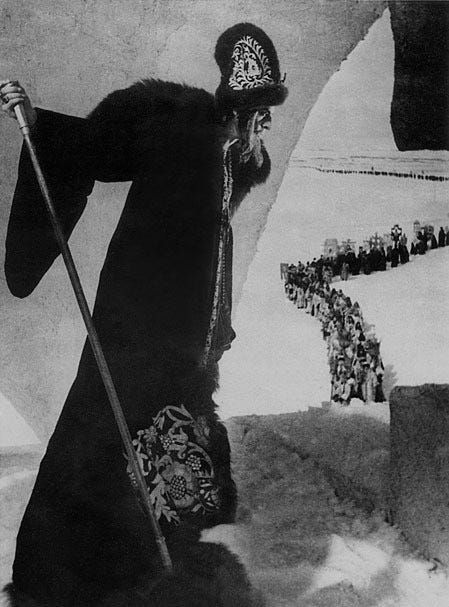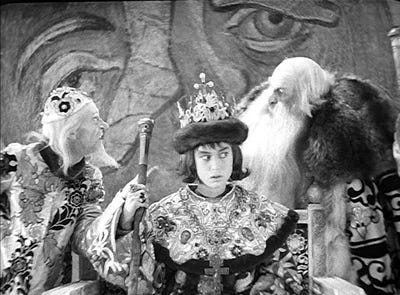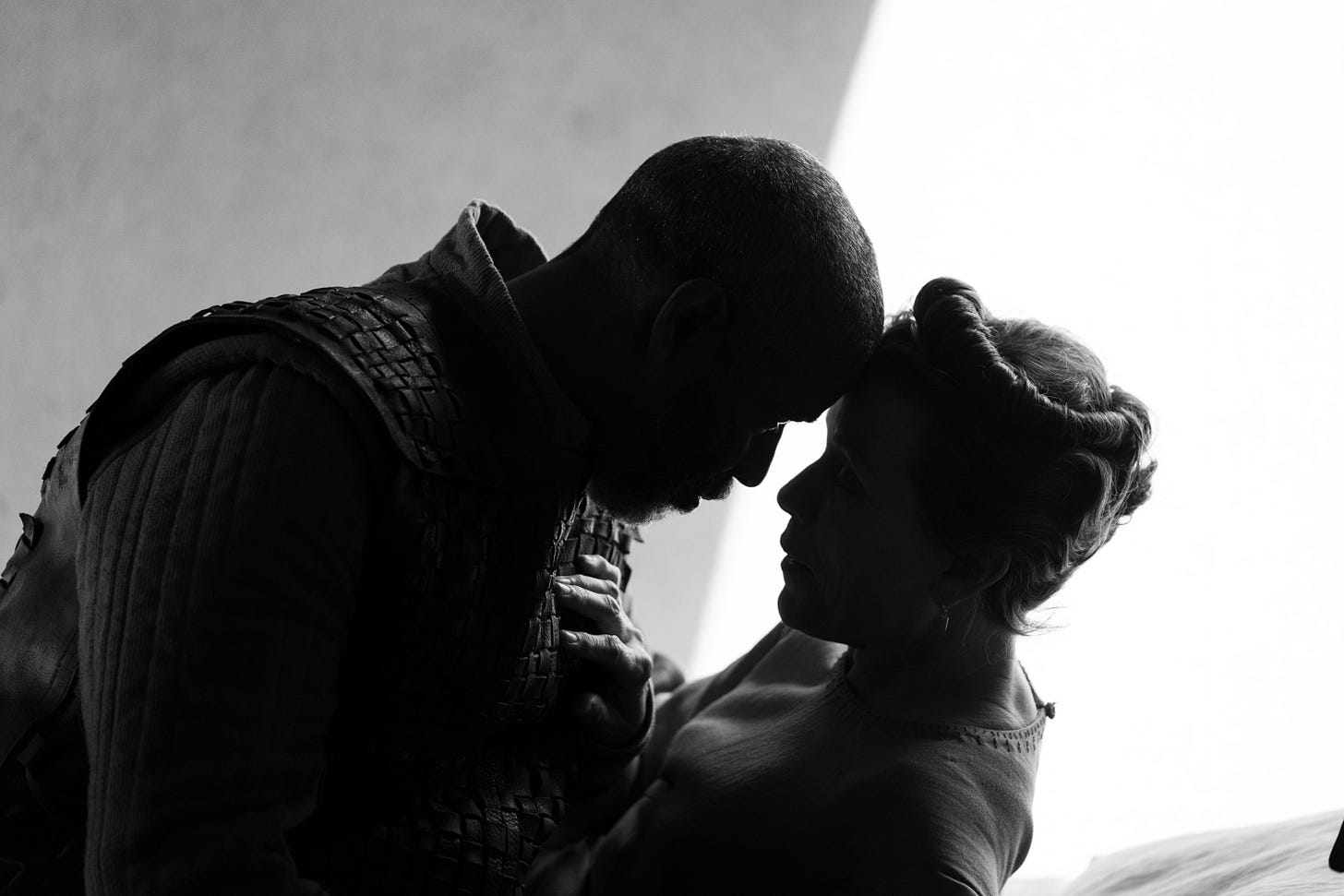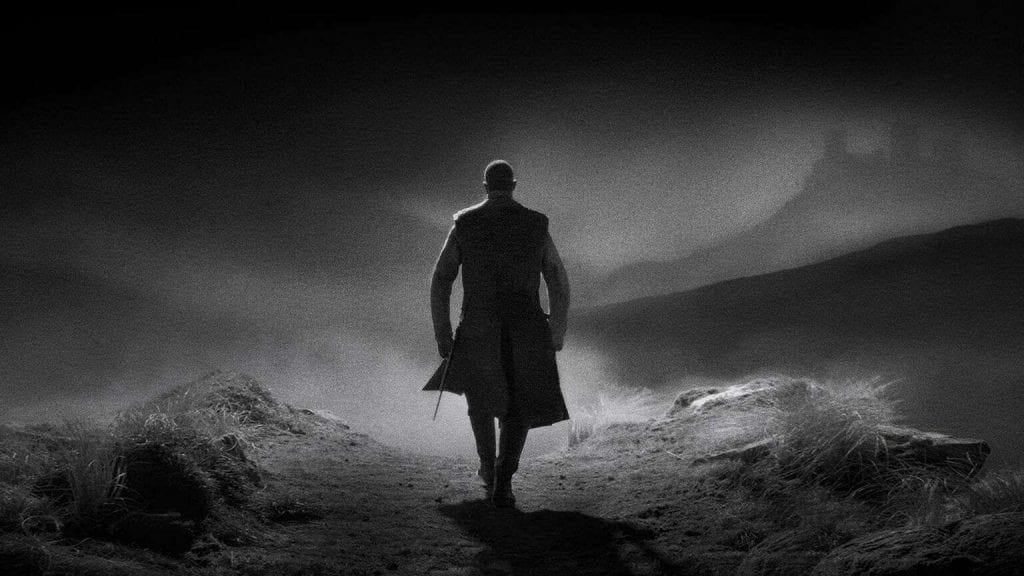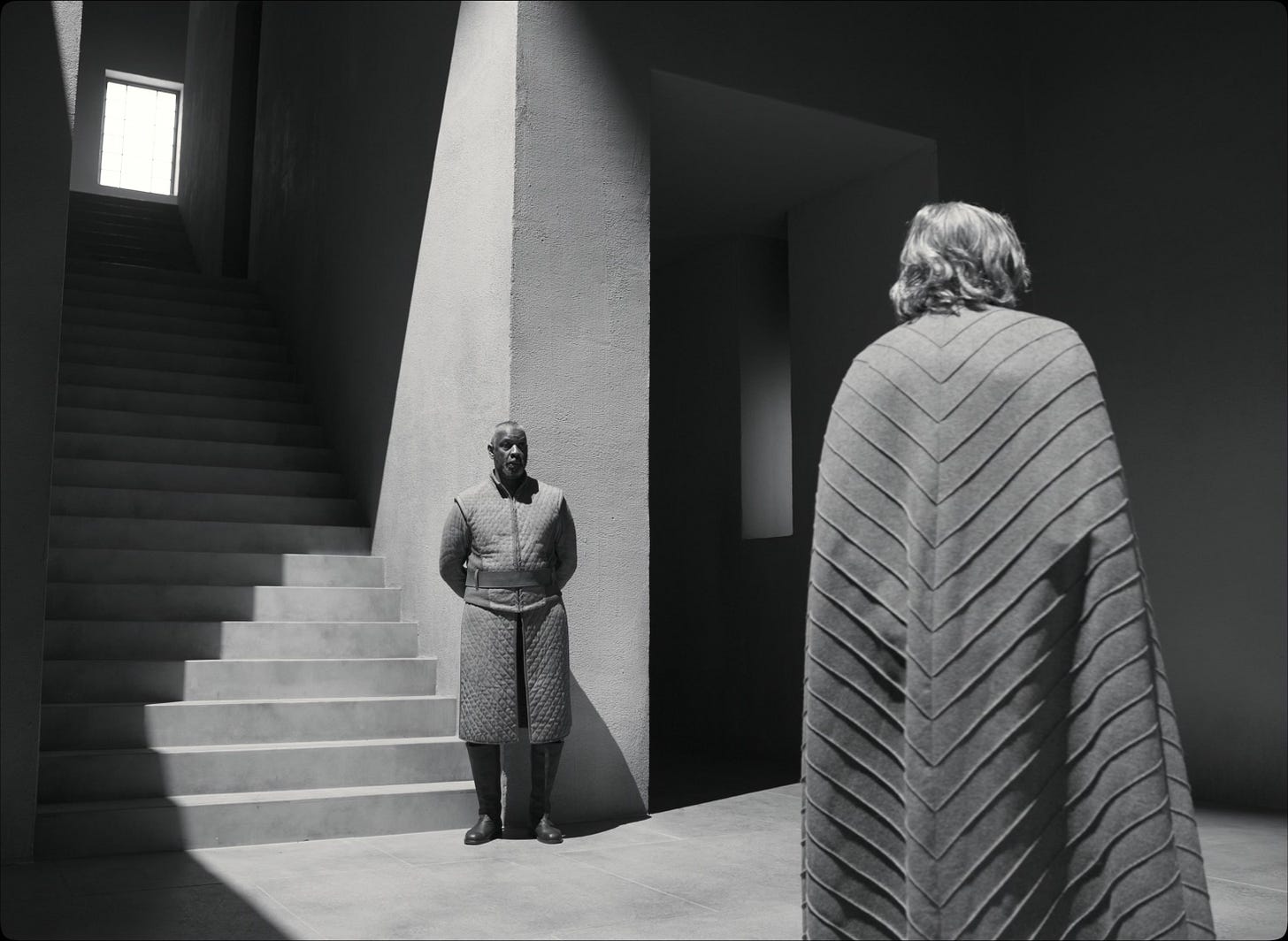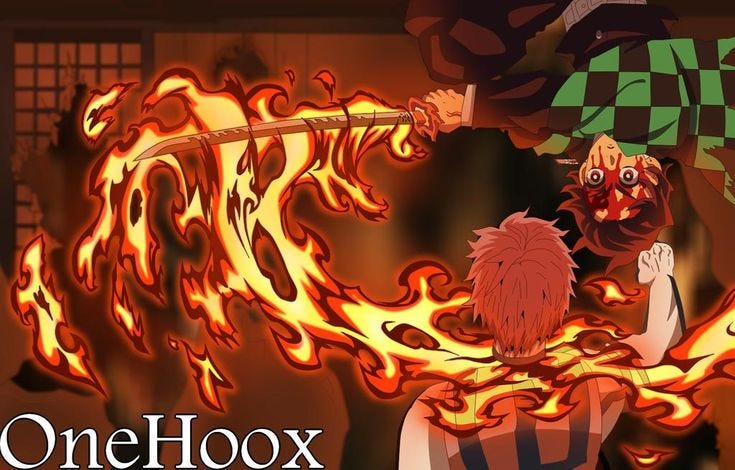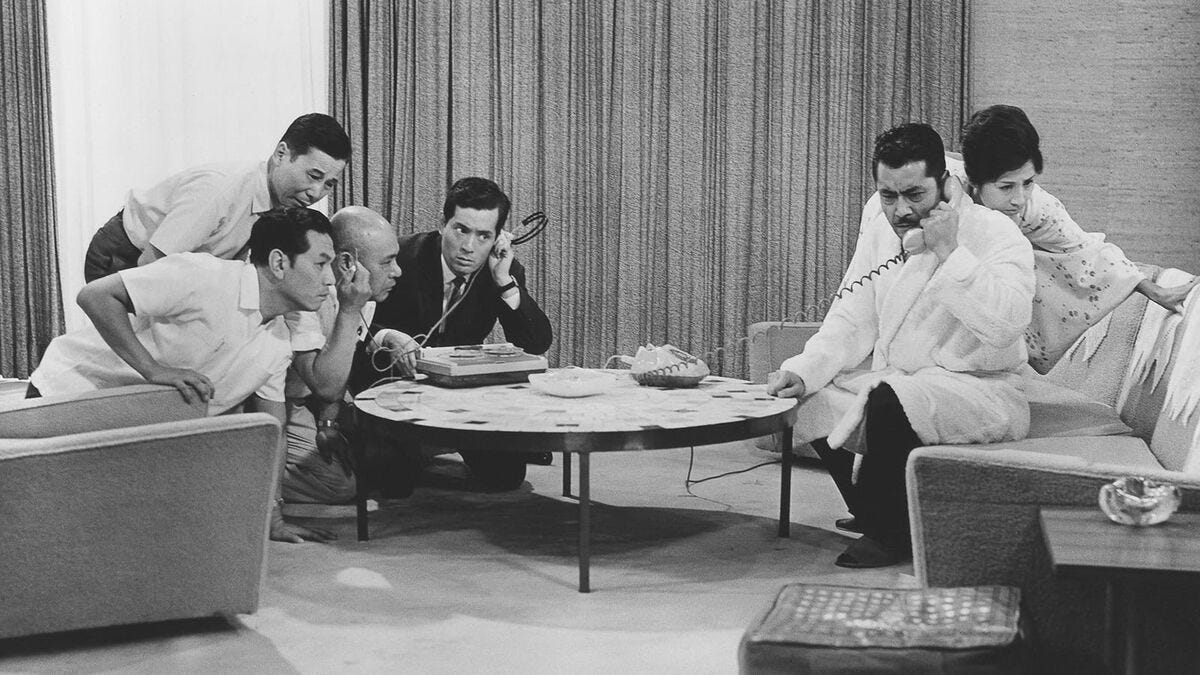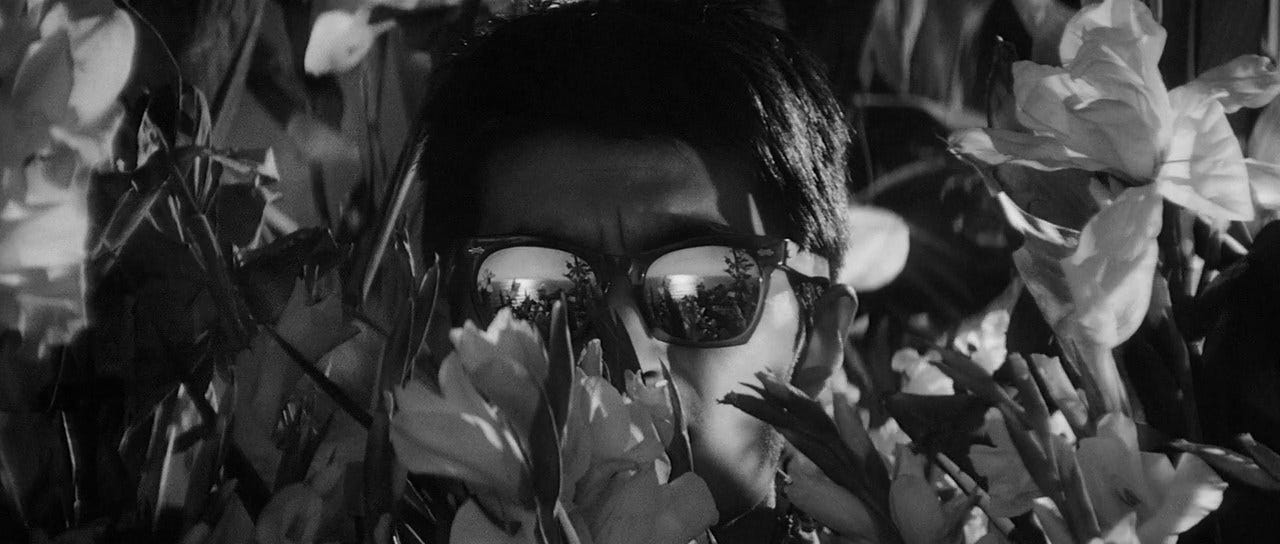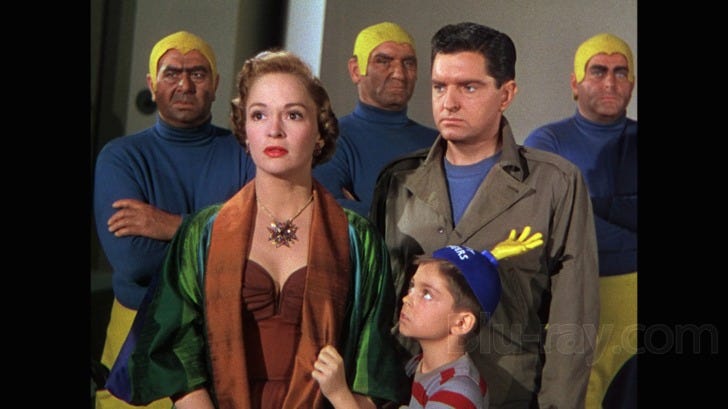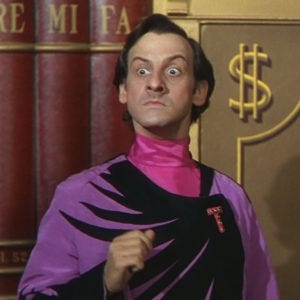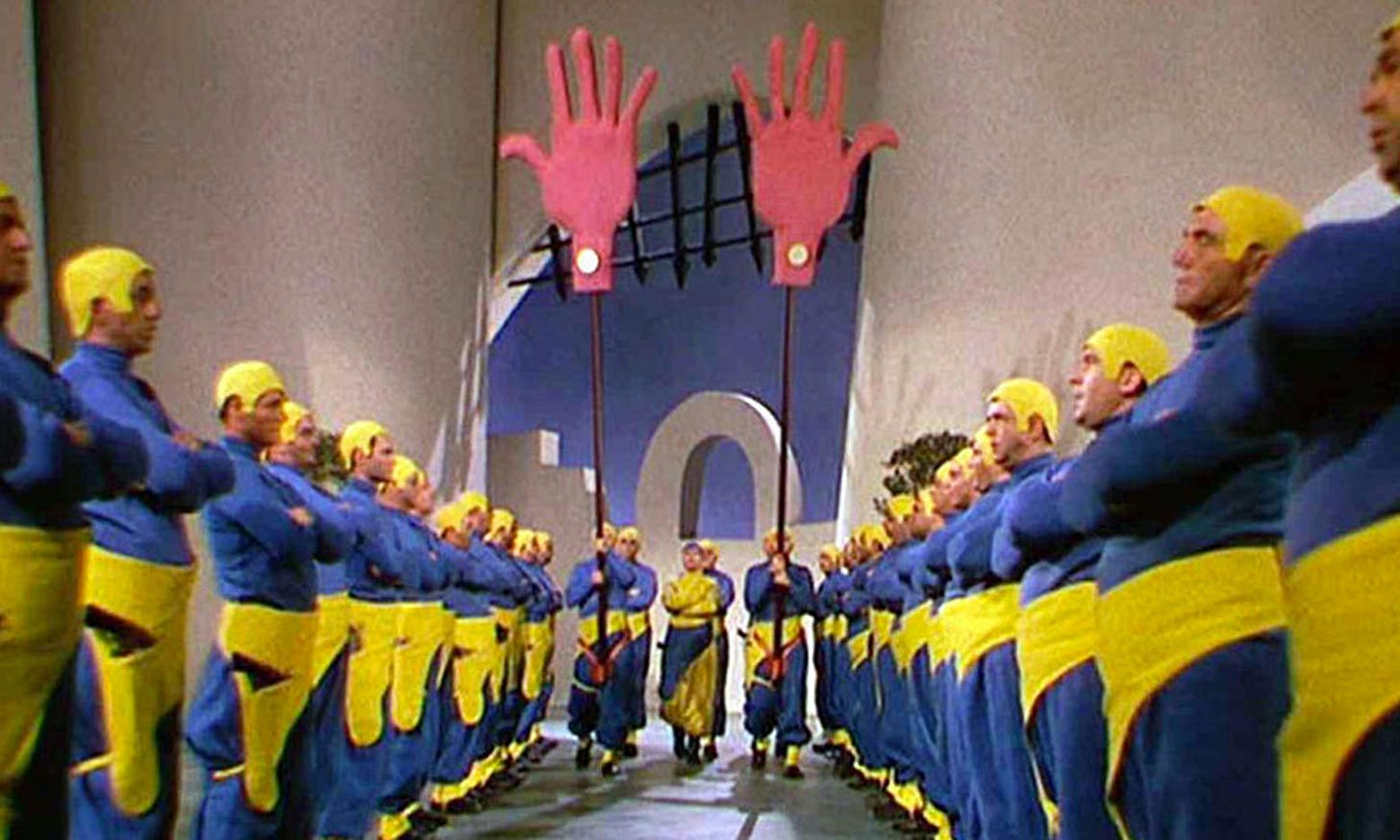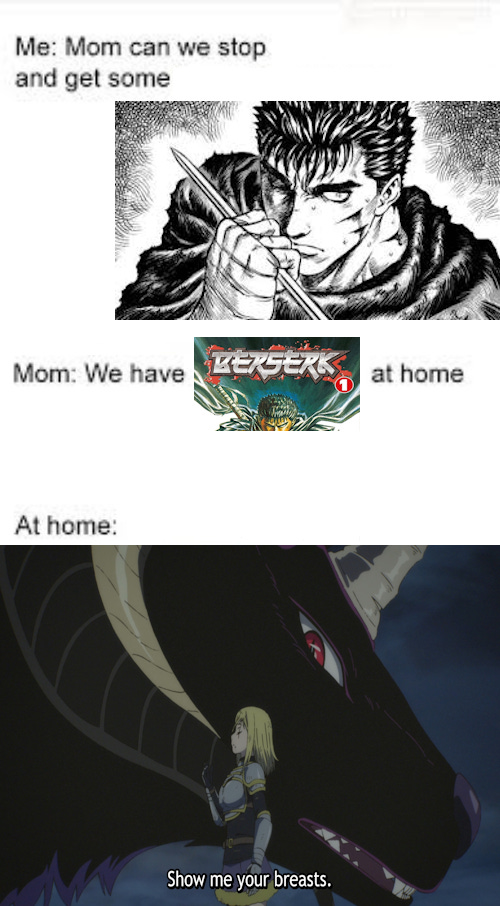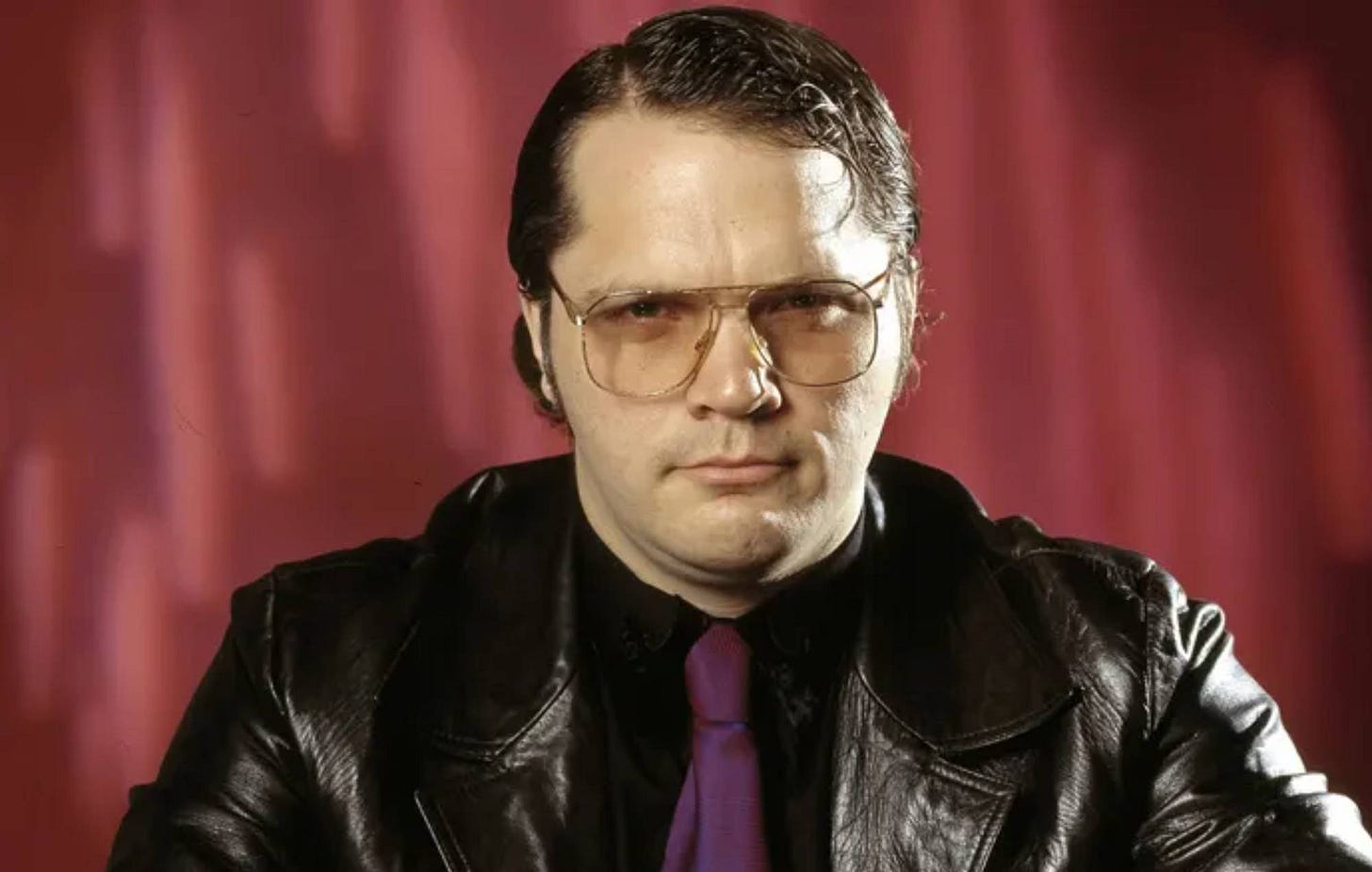Summer has indeed, ended. I am still struggling though the last of the first five Snail Knights stories; The Tale of Sir Whirl. Progress is being made though! I hope to be done by mid-October (`-´)> fingers crossed! Snails snails snails, my every waking thought is bent on snails. This might be the strangest story I have ever written. O dear.
The art for Queen Mabs Palace is still coming along and we also think that will be done by the middle of October. I have submitted my final correction document so hopefully we will be looking at a completed print file by the end of the year?
I have no idea my American shipments are going to be down. Hopefully not too long? The fact that absolutely every other international seller I know seems to be getting better, more advanced advice, is not lost on me..
For the rest, I struggle through my half-inhabited days, besieged by to-do lists. Here is a list of artefacts experienced in September;
Spacewreck, Ghostships and Derelicts of Space
Ivan the Terrible (1944)
The Tragedy of MacBeth, (2021)
Demon Slayer, Infinity Castle Part One
High and Low, Akira Kurosawa
A Celtic Miscellany
The 5000 Fingers of Dr T, (1953)
Cleavatess
4th September - Spacewreck
Ghostships and Derelicts of Space by Stewart Cowley
A Terran Trade Authority Handbook
A calm and peaceful book, who’s only purpose is contemplation; like a scholars stone, a fragment of pseudohistory; places that cannot be ‘used’ and which signify nothing other than themselves.
This is from the ‘golden age’ in genre art, an age of ink where digital did not exist. This age birthed titans in fantasy, of which Stewart Cowley isn’t necessarily one; his images are good, but if ranked up with the contents-irrelevant paperback covers of the 70s, you wouldn’t pull them out. Here though, they are arranged amongst themselves, given large and luxurious room to breathe. They even have fold-out pages for a glorious widescreen feel!
That these wrecks are given as history seems significant. This is a post-war book…
..in our world and the one imagined, (an memory strikes of Chris Foss, growing up on Jersey, inspired by rotting ruins of WWII and reproducing them in space), and nearly a post-exploration tome, for, in those ages where wars and explorations are actually going on, there is little time to scratch lines. Book such as these belong to the periods of peace, and periods of contemplation between ages of crisis. Here are doomed explorations ruined by the hallucinations of poison planets, quarantined bio-plague investigation ships, the tombs of wild military adventures returning on unexpected parabola to the scenes of their destruction, strange alien craft, empty, or filled with corpses, sargasso seas of wrecked ships. Here also are the memories of stories, for each of these wrecks is the end point and memory of a science fiction story; the story of the pirate who crashes on an island/planet, encounters aliens/primitives, and becomes a god, the story of a rag-tag fleets last-ditch attempt to stop a planet-death, the story of a resource-poor world consumed by war, leaving only ruins.
We contemplate these stories only after their end. In many the end is the only certain thing and, like in many cases where the arc of time is subverted or reversed, this makes things a little existential - by removing and possible tension from events we are left with everything else. These are things to dream about, as one might dream about a ‘real’ mystery, they invite the you to build ecologies of wonder, combining the restless outgoing considerations of the explorer or invader, with the calm, centred and somewhat sorrowful perspective of the historian or philosopher. Probably Ursula LeGuin would like this book - all the tumults ended and what remains is the slow reclamations of entropy. (Is this a Daoist book? Are ruins Daoist?).
Pseudohistory is the strangest kind of play, for it is a product of play, yet has no play in it, at least, certainly this sort, which has no grand explicit theme, no dark warning, no massively interlinked lore, and nothing especially subtle going on with its construction of imagined events, (we are not going to find out that this or that is behind-it-all, or discover the book itself is a cognithazard, there is no monster in the background and no epistolary game between imagined interlocutors), it is, entirely and only, the sensation of one child in a garden finding something ‘weird’, and calling others round to look, a direct sharing of strangeness.
A wreck is a ruin, a graveyard, a memory of disaster - an image of human hope which overreached, or otherwise failed, and in some cases, a pure mystery, its origin unknown, unknowable, a tenuous fragment of an inferred larger world. One things for certain - there is nothing left to do but remember, and witness what remains.
Here, like a ruin, is a symbol left by God, a little watermark in reality, or a fragment of html left in the main text of a web-page, making it explicit that what we see and live within, the tumult of our sensory world, is like a little sheen of breath on metal, evaporating round the edges, part of something strange and large. Ruins are the keys of time, and wrecks also, are doorways, symbols of a time-sense larger than we can immediately perceive, the mind leaps here intuitively, into scales and measures which formerly hit, or resisted contemplation.
It is hard to be hysterical around a wreck.
Ivan the Terrible (1944)
Parts One and Two
Directed by Sergei Eisenstein
An absolutely gorgeous, expressionistic, theatrical, hieratic, symbolic film, so wild and abstracted in its images it is nearly a fantasy. Made of static cameras, turns and STARES ಠ_ಠ ಠ__ಠ ಠ益ಠ ( ͡° ͜ʖ ͡°), a friend noted that in the one colour section, in the middle of Part Two, the moving eyes of the characters no longer work as part of the same visual language as they are no longer the lightest, the brightest, thing in the scene. Both parts are drenched in the singing, ceremonies, rituals, processions, marriages, and the fabulous arrangements of Russian Orthodoxy.
I am convinced the characters move a lot like early Disney, the queens and witches; the language of gesture, the billowing and glittering, the fluid, programmed and hyper-signalling way they move, gesture, move again across a scene, turn, stare, then a kind of ‘considering’, like the gesture of a theatre actor or the ‘bounce’ or ‘wind up’ of an early Disney form, the little compressions before a movement, all the emotions and events are repeated, echoed and reinforced by extreme movement, no main character is ever just standing around, they are GAZING, leaning forward in conspiracy, staring in desire or resentment. Like the gazes of the Iliad which seem to hover like semi-solid gems within the air.
This is another square, black, somewhat expressionist film that might do better as a shorter, silent movie- everything you need to know is told visually anyway, (except that you would lose the singing, which is also great, captivating and very strange). We are always in or out of a cathedral, always surrounded by Boyars and black-clad Priests. The costuming and primitive hair is prodigious, but forms a vital part of this glittering, burly, hairy, stinking film. Sometimes it feels like Ivan himself is the only tall thin person in the world, and he is very tall. He is drawn by Sidney Sime, a king from an illustration; looming, bending, crouching, falling to the floor in grief.
Sergei, you lost the audience, (and the audience was Stalin). Stalin was a big fan of Ivan the Terrible, (the man). Unfortunately, they were similar, and Ivans story, which begins with a struggle against adversity and some clever heroic actions and victories, ends up that of a crazed, paranoid, violent, repressive, man alone, a guy who memorably murders his own son in a fit of rage. All unifiers have their darkness, (and odd similarities; surrounded by rebellious barons when young like Louis XIV, lots of dead wives like Henry the Eighth) the Russian version is darker than most. This is why, taken as a whole, while the telling of it is beautiful and remarkable, this is not actually a ‘good’ story, because it can’t tell the actual story of Ivan the Terrible, because it would be a tragedy about a Tyrant Getting Worse and Dying Alone, and Stalin wouldn’t like that. Ivans story ends badly, so the longer you keep telling it, the more upset Stalin, (who identifies with Ivan), gets. Nobody wants an upset Stalin. Hence; two films where three were intended, and the second film repressed and never shown.
Five out of five top tier Stalinist propaganda, one star removed for being Stalinist propaganda, and for not being a great, or complete, story (though incredibly well told).
The Tragedy of MacBeth, (2021)
Joel Cohen
never listen to your BPD wife
ANOTHER square, dark movie. I have watched a bunch of these! Well, three; The Lighthouse, Ivan the Terrible 1 & 2 and this. Macbeth is greyer than the other two though, pale and washed with fading things, rather than the rich ink blacks. Cohen has an advantage over Eisenstein in that he is telling an actually good story. Hard part is that its already a masterwork so even if you put in an A+ effort, you just get the ‘didn’t fuck it up’ award. There are so many great scenes and moments in MacBeth, you can hardly go a page without finding a phrase or line that has not become a title for some other book. People like MacBeth! (The play, the guy is bad.)
The minimalist staging is good but not quite Eisenstein level. Who is though? The less information there is on screen the better, it lets the poetry lie and the density of the text combined with performance means that it about as much as a reasonable person can take in, (I had had a few drinks during). The speeeeeeed is good; film bombs through the play to good effect. Some bad; a handful of closeup soliloquies needed more oomph and volume; “unsex me now” is not a sotto closeup.
Friends seen again - Kathryn Hunter was Syrils mum in ‘Andor’. She give good witch. Lots of solid concepts in their presentation but having the witches literally be 3 in 1, like a meal deal, was less perfect than it might have been. Seems like it would be fun to be a witch. Its funny to see Ralph Innes in things, to me he will always be Finchy from ‘The Office, he threw a kettle over a pub, now he is Galactus. Nice once.
Fuck I forgot Brendan Gleeson, he is REALLY good in this. Standout work on a near-nothing role.
The ‘Didn’t fuck it up’ award is hereby given to the competent but sober Cohen.
Demon Slayer, Infinity Castle Part One
Oringal Manga by Koyoharu Gotouge
Direction by Haruo Sotozaki
some days you find yourself thinking deeply about bout life, wondering where things went wrong, maybe soliloquising to yourself WAIT LOOK THE FUCK OUT TANJIRO IS HALF WAY THROUGH CUTTING YOUR HEAD OFF
sly little beggar, not that, at this stage, actually cutting of a demons head does a blind bit of difference.
If I were a demon, how long would my flashback be if Tanjiro cut off my head? What would this film be like if it wasn’t one part of a series of 20 minute episodes? Impossible, irrelevant questions. It would be incoherent to the point of madness
If you don’t already know what’s going on; an evil dude is coming, we samurai dudes have cut off his head, and probably also fight him till the sun comes up (see above). Now we are in an infinite castle we didn’t mention, (looks cool as shit though). The good guys seem to get on so that’s nice. Main bad guy is a blood clot. Still is by the end; he only has four main dudes left, along with infinite crappy demons in his infinite castle;
We ‘complete’ two stories in this; one for Zenitsu, who, if you are just meeting him here, congratulations because for every season of demon slayer he has been the worst character imaginable and is only just about bearable now. His arc ends with a pretty standard dual-apprentices-one-turns-evil master-commits seppuku-showdown.
The second is the doom of Akaza, Goon Three of the bad guy forces. This is actually a complete story with one of the loooongest flashback how-i-became-a-demon stories in the series.
Its never the head, its the heart. This is what makes Tanjiro dangerous, not decapitating demons, but making them introspect. He is truly the Demon Therapist. Its not long before they are sitting down reminiscing about their lives. In decapitating Akaza he just gives the demon time to think. In continuing to fight he prompts the return of memories. Being given back the memories that were taken from him, Akaza gains self-recognition and... just stops being a Demon. Nopes out. I think this is the only demon so far to drop the whole fucking thing once he is in his right mind. Honestly a pretty alpha move.
Well that’s Demon Slayer. This movie is like the Avengers Endgame of the Demon Slayer Series except its just part one of three. The visuals are way more fun than any Disney/Marvel movie I can remember. The Infinite Castle is a really cool setting if I become a Demon Lord I will definitely try to get one.
No star rating, its good if you like Demon Slayer, for all of its flaws and boons, and dust in the air if you don’t.
High and Low
Akira Kurosawa
An absolute masterwork in direction but the story, while good, has a broken back, preventing it from getting to S tier.
A rich, (self-made man), guy is involved with corporate shenanigans. He has foolishly mortgaged his entire life to buy out the company. The deal must be done within a day. Then, his son is kidnapped! Oh wait, the kidnappers got the wrong boy, instead they took the son of his driver. They want all that money he mortgaged his future to get and if he gives it to him, he, and his family, lose everything. If he doesn’t, by by random child. What will he do?
The first act of this film is perfect. All set within one room, or a handful of rooms within a single house, filled with complex involutions and shifting, hidden or anguished motivations. The fact that the dynastic-drama scheming and backstabbing is all taking place over a shoe company, and that it all comes over so wonderfully is very graceful.
The main problem with the film is that Toshiro Mifune isn’t in all of it. He is so fucking good, and such a great character for the first act, that he eats the story, then, once the ransom is paid, half way through the film, we turn into a police procedural, almost a pseudo-documentary, spread out across Tokyo.
This dark-Tokyo procedural is a very worthy film in its own light and is directed by a master. The flows of movement, composition, visuals and story-energy moving through and around the screen make this a directorial masterpiece in any eyes. The gestalt nature of the sweaty cops, gathering in rooms filled with fans and cigarette smoke, scraping the city for fragments of information and assembling them as a hive mind of little cop bees, is really good, and not something we see much of in films. But the reason we don’t see much of it is because, for a two hour drama, watching a single hero is just more interesting. The first third is peak drama, the first half is great storytelling and the second half is great documentary, gestalt, cityscope filmmaking, truly telling the story of the whole underworld of the city, but the narrative energy you got with Mifune in his room just isn’t as strong.
In a curious similarity with Demon Slayer, which I watched on the same day, this also has a Tanjiro-decapitation-flashback how-I-became-a-demon scene right at the end where the mastermind insists on talking to Mifune, the man whose child he failed to kidnap, essentially declaring how shit his whole life has been, before breaking down; fade to black. These scenes feel like fragments of an older form of storytelling, they are not quite as psychological as they seem, more ‘pitiful’ in the Victorian sense, or even the medieval sense, not really driving the audience to morally investigate their own souls, but holding up this ‘pitiful creature’ for a moment, for us to look at. As if the witnessing itself were the point.
A Celtic Miscellany
Translations from the Celtic Literatures by Kenneth Hurlstone Jackson
turns out I already read this - in 2019..... What? I read the whole thing again without realising? But why?
So I could steal loads of it for the Tale of Sir Whirl. I am a thief of dreams!
This is an utterly lovely book. What is it that gives a culture one mind and not another? I’m familiar with the slow advance of colour words in language and discovered from this, though not to my surprise, that the Celts were in advance of others. Certainly from Anglo-Saxon poetry I recall only light and shade, and many glitters and gleams, from blade edges and gems.
Where does imagination come from and why should they have this particular, active, lively, overflowing and playful mindscape, these outrushings of vivid originality, this intensely and directly imagined natural world? Why do they think, and see, like this?
Questions to deep for the sadly minimal time I have to write about this.
“She’s the white flower of the blackberry, she’s the sweet flower of the rasberry, she’s the best herb in excellence for the sight of the eyes.
She’s my pulse, she’s my secret, she’s the scented flower of the apple, she’s summer in the cold time between Christmas and Easter.”
The 5000 Fingers of Dr T
Directed by Roy Rowland, written by Dr Seuss
A surreal film about a young boys surprisingly intense passion for a father.
Its goodbad, a swingy three. Quite boring and tiresome in parts, with not enough story for its (short) run time. Only and hour and a half long but feels longer. A book of curiosities. For such a very mid film it has a surprisingly large amount of good elements. Its almost impressive you can have this many good things in a story and have it still be not-that-good overall.
Surprisingly Good Performances;
Tommy Rettig is one of the more bearable child actors ever seen.
Peter Lind Hayes and Mary Healy were married music hall stars and their chemistry onscreen is largely present. Hayes is great as the Plumber and alternate father figure Mr Zabladowski. Its kind of weird that young Bart Collins kind of sexlessly seduces Mr Zabladowski into being his new father. That’s the main emotional axis of the story. Some scenes of Bart and Zabladowski together create a sense of intimacy that felt rare to see in modern films. Perhaps naïve simplicity or maybe Dr Seuss is kind of a creepy weirdo. Or both.
Mary Healy is hypnotised or deluded the whole film and essentially plays ‘Mother’ as seen through the eyes of a young boy, her presence is blank and beautiful and is meant to be but the whole idea of her in the film is mildly creepy.
Hans Conried is amazing as Dr. Terwiliker. One of the great Extra villain performances of all time, a high point in ridiculous and deranged campery, very much a pre-Simpsons Simpsons character. Fs in the chat for Dr Terwiliker, all he wanted was... what _did_ he want? To take over the world with Piano Playing boys? To imprison every non-piano playing musician wordwide? (he ha already achieved that)
Long, extended, weird, uncomfortable and boring scenes;
There are very few musical or performance based ideas in this that are not massively overused.
Mt Zapodowski and Dr Terwiliker getting into a dance-based semi-comedy hypnotism battle is kind of a cool idea but goes on way too long. A VERY extended sequence where the green-painted imprisoned musicians of the world perform a grand percussive ballet for... some reason, goes on for a very long time. The skating twins linked by a dual beard are a cool and creepy idea but simultaneously undercooked and overused. (Though the fact that snipping their dual beard with some clippers literally kills them both is wonderous. But its a wonderful idea in the middle of a leaden and overdone scene). The bad guys get not one, but two, ‘Bad Guy’ Songs, one where Terwilikers goon army swear fealty to his institute and another where he gets dressed for his big day, its nice to see them having fun but neither of these scenes actually do anything for the story and the songs themselves are not actually good. Its kind of mindblowing that there were originally TWENTY musical bits, half were removed and still Terwilikers ‘Dressing Song/Do-Mi-Do Duds’ stayed in the movie.
Can Formalism be fun?
Or is it just creepy as shit? One thing I’ve noticed about watching a lot of formalist films is that they tend to be beautiful, creepy and cold, but never fun and this film is built entirely on being fun, which it is not. Still a visually lovely and fascinating curiosity though.
Cleavatess
Original manga by Yūji Iwahara
Animation by studio Lay-duce
I don’t know if I’m embarrassed about watching this or not.
A hero on her big mission dies in the first episode and is resurrected by the magical beast she was sent to kill. The super-monster has taken an interest in humanity and grabbed some kid to raise to see how they work, now he needs an actual ‘living’ (our hero is kind of a zombie at this point), human to do the detailed shit. These three form a bizarre family unit as they are all drawn in to war, magic and intrigue across a mysterious fantasy land.
This is one of those shows that I tell myself I’m not that into but then I mainline every available episode in a day, indicating a clear difference between my self-described self, and my actual Id.
The boundaries of this curious psychological concept would be, for me, on one side; Solo Levelling, which I know is mid trash (and should be ashamed of itself for slopifying the Chimera Ant Arc), but I did mainline it, and I just have to live with the shame of knowing that’s the kind of person I am, and, far far far on the other end, something like Berserk, which to an uncultured observer might look like trash, but which I can firmly ‘well, actually’
Point being my neocortex thinks Cleavatess is mid but clearly my hindbrain disagrees so lets look at the nature of that mixed appeal; a combination of a battered knightly heroine holding on to the rags of her ideals in a corrupt world, forward-through-suffering problem solving, crackpot family values as the Hero (and really dual-protagonist), Alicia and the ‘Villain’ Cleavatess end up both protecting the baby king for somewhat different reasons, an alienated, disconnected but not dishonourable or sociopathic supervillain character, an Insect Twink, bondage armour which we happen to find in a drawer and a creepy and gradually cohering magic system and world history. Throw in a few more absurd or ridiculous elements than Berserk would ever allow and there you go; Berserk - At Home.
That Was My September!
In October, if all goes to plan, books will be born! Queen Mabs Palace will start crowning my creative vagina o my god what an horrific metaphor, while ‘Knights of the Snail: Book One’ will be conceived in my mind-womb and begin to gestate.
Once that is done, back to VotE: ReDux and unnamed Scrap Princess project!



